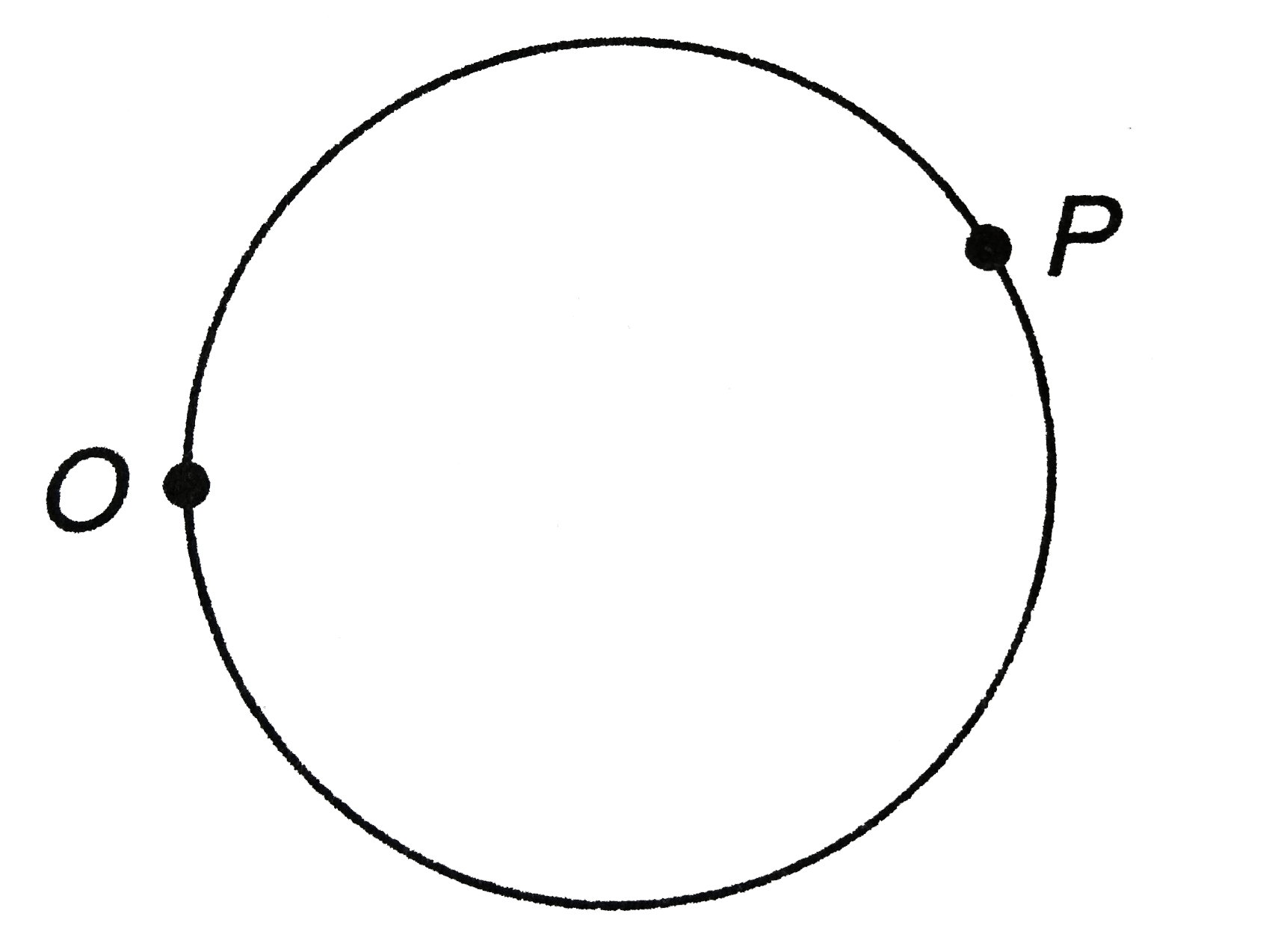A particle is moving along a circle of radius 20cm, with a linear velocity of 2m//s. Calculate the angular velocity of the particle.
To solve the problem of finding the angular velocity of a particle moving along a circle, we can follow these steps:
1. Identify the given values:
- Radius of the circle, r=20cm
- Linear velocity, v=2m/s
2. Convert the radius to meters:
- Since 1cm=0.01m, we convert 20cm to meters:
r=20cm=20×0.01m=0.2m
3. Use the formula for angular velocity:
- The angular velocity ω is related to linear velocity v and radius r by the formula:
ω=vr
4. Substitute the values into the formula:
- Now substitute v=2m/s and r=0.2m into the formula:
ω=2m/s0.2m
5. Calculate the angular velocity:
- Perform the division:
ω=20.2=10radians/s
6. Conclusion:
- The angular velocity of the particle is 10radians/s.
Final Answer:
The angular velocity of the given particle is 10radians/s.
---
- Radius of the circle, r=20cm
- Linear velocity, v=2m/s
- Since 1cm=0.01m, we convert 20cm to meters:
r=20cm=20×0.01m=0.2m
- The angular velocity ω is related to linear velocity v and radius r by the formula:
ω=vr
- Now substitute v=2m/s and r=0.2m into the formula:
ω=2m/s0.2m
- Perform the division:
ω=20.2=10radians/s
- The angular velocity of the particle is 10radians/s.
The angular velocity of the given particle is 10radians/s.
Topper's Solved these Questions
- SYSTEM OF PARTICLES AND ROTATIONAL MOTIONBook:AAKASH INSTITUTE ENGLISHChapter:SYSTEM OF PARTICLES AND ROTATIONAL MOTIONExercise:Illustration
Explore 4 Videos
- SYSTEM OF PARTICLES AND ROTATIONAL MOTIONBook:AAKASH INSTITUTE ENGLISHChapter:SYSTEM OF PARTICLES AND ROTATIONAL MOTIONExercise:Assignment (Section - A) Objective Type Questions (One option is correct)
Explore 62 Videos
- SEMICONDUCTOR ELECTRONICS: MATERIALS, DEVICES AND SIMPLE CIRCUITSBook:AAKASH INSTITUTE ENGLISHChapter:SEMICONDUCTOR ELECTRONICS: MATERIALS, DEVICES AND SIMPLE CIRCUITSExercise:Assignment (Section-D (Assertion and reason))
Explore 5 Videos
- TEST 1Book:AAKASH INSTITUTE ENGLISHChapter:TEST 1Exercise:EXERCISE
Explore 21 Videos
Similar Questions
A particle of mass 1kg is moving about a circle of radius 1m with a speed of 1m/s. Calculate the angular momentum of the particle.
View SolutionA particle of mass 1kg is moving about a circle of radius 1m with a speed of 1m/s. Calculate the angular momentum of the particle.
View SolutionA particle moves in a circle of radius 4 m with a linear velocity of 20ms−1. Find the angular velocity.
View SolutionA article moves in a circle of radius 20 cm with linear speed of 10 m/s. Find the angular velocity
View SolutionA particle starts moving along a circle of radius (20/π)m with constant tangential acceleration. If the velocity of the parthcle is 50m/s at the end of the second revolution after motion has began, the tangential acceleration in m/s2 is :
View SolutionA particle is moving along a circle and its linear velocity is 0.5ms when its angular velocity is 2.5rads−1. Its tangential acceleration is 0.2ms−2 then its angular acceleration is
View SolutionA particle moves along a circle if radius (20 //pi) m with constant tangential acceleration. If the velocity of the particle is 80m/s at the end of the second revolution after motion has begun the tangential acceleration is .
View SolutionA particle moves along a circle if radius (20 //pi) m with constant tangential acceleration. If the velocity of the particle is 80m/s at the end of the second revolution after motion has begun the tangential acceleration is .
View SolutionA particle moves along a circle if radius (20/π)m with constant tangential acceleration. If the velocity of the particle is 80m/s at the end of the second revolution after motion has begun the tangential acceleration is .
View Solution
Particle P shown in figure is moving in a circle of radius R=10 cm with linear speed v=2m/s Find the angular speed of particle about point O.
View Solution